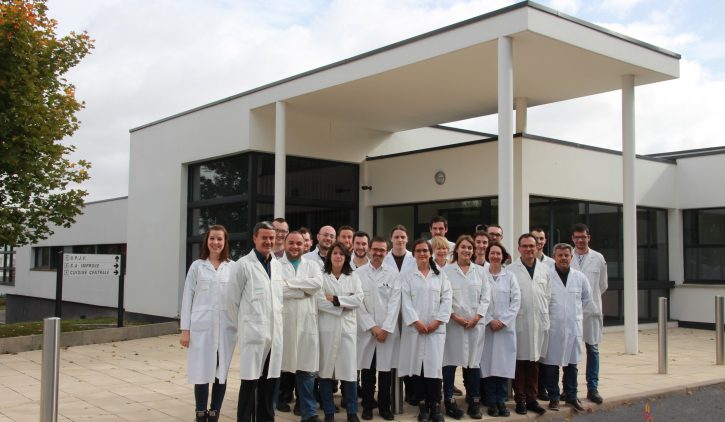
Fruit of a French Public/Private Partnership, Improve dedicates its research to promoting the use of the proteins of the future. Denis Chéreau, its General Manager, describes the future challenges of the sector in order to meet the global protein needs.
When was Improve born and what are its missions?
Denis Chéreau : Improve is the first European innovation Platform fully dedicated to the valorisation of proteins extracted from plants and other alternative sources. It was created in 2013, bringing together companies such as Tereos, Sofiprotéol, In Vivo and Vivescia Industries, bioeconomy players through the French IAR cluster, research through Extractis, the University of Picardy, INRA, and financing. Improve is a Partner of the consortium Protéines France, wich benefits from support since, due to Anne Lauvergeon’s report, proteins have become one of the 7 national priorities. Our mission is to support our customers in the development and production of protein ingrédients. To this end, we have state-of-the-art Equipment for dry and wet fractionation and laboratories (170 m2) for the characterization of products high in protein, of their functional and nutritional properties, composition, digestibility and organoleptic properties. We have a 800 m2 pilot unit and in-house knowledge and capacity to meet the needs of our customers.
What is the subject that drives Improve?
Denis Chéreau : What drives us is the observation that our operating model is not sustainable! Global agricultural production accounts for 10 billion tonnes, 555 million plant-based proteins, of wich 3/4 are given to animals to produce 89 million animal proteins with an average conversion efficiency of 4.9%. Only 115 million tonnes of plant-based proteins directly reach our diet, 2 million tonnes thereof being protein ingrédients (isolates and concentrates) mainly extracted from soy (56%) and wheat (43%). Secondly, only 18% of the world’s population can afford a daily animalprotein incake of 60 g. Wich ultimately means that 3/4 of the world’s agricultural resources are used by less than 20% of the population. Another element to be taken into consideration efficiency of plant-based proteins into animals proteins by livestock. Of course, other ressources such as microalgae, yeasts or insects can be explored. But plant-based proteins currently are the most interesting alternative to animal proteins from a nutrional, economic or sustainable point of view. It should be kept in mind that the process of producing alternative proteins, regardless of their extraction source, must be righteous and as efficient as possible.
Why this challenge of diversifying plant-based protein sources?
Denis Chéreau : As we cans ee, the current supply of plant-based proteins is monopolized by soy. In fact, soy is 30 years aheahd of the history of plant-based proteins. They have had plenty of time to develop high-quality processes and products and soy proteins are currently marketed at extremely competitve prices. Wheat gluten is the second source of plant-based proteins that has entered the market. The other sources may be called « outsiders », including pea, wich is in the lead, but still far behind soy and wheat. We believe that a diversified supply would allow relocating the production of plant-based proteins because, please note, soy comes mainly from United States, Argentina and Brazil, even though a French soy production sector is currently developing. In addition, some of our customers are looking for alternative sources of protein to soy so as to avoid the risk of GMO’s, the isoflovane content, the risk of allergies, the taste problems and, in general, the sometimes-negative image of soy.
France has a role to play considering the high diversity and specificity of its territories in plant production. There is a wide variety of sources of plant-based proteins, let’s explore it!
Do plant-based proteins have functional properties, just like animal-origin proteins?
Denis Chéreau : In order to develop, plant-based proteins will have to be nutritional, bust most often functional. They will have to provide foaming, gelling, emulsifying or texturing properties. Hampton Creek (JUST) has raised $200 million to be able to automatically screen plant-based proteins and more quickly identify their functional properties. Today, we are witnessing a real revival of interest in protein hydrolysates from plants, but everything is yet to be discovered. The scientific publications on the bioactive properties of plant peptides are more and more numerous. In particular, food supplement and cosmetics companies are very interested in plant biopeptides with anti-bacterial, anti-oxydant and anti-hypertensive properties. And, yes, our customers are asking us to fraction plant-based proteins so as to extract peptides with anti-oxydant or surfactant activities, espcially for cosmetcis applications and often as part of a clean label or circular economy approach.
What obstacles are still there to the development of plant-based proteins? What about the challenes surmounted so far?
Denis Chéreau : From a nutritional point of view, as compared to animal proteins, plant-based proteins start out with a handicap, but it is known that by combining cereals with pulses it is possible to provide all the essential amino acids in a balanced way. Moreover, analyses of the amino acid profile of plants have revelated that some plants have interesting levels of certain amino acids. Maize contains, for instance, 130 mg leucine per g of protein, wich is 1.5 times more than beef. However, leucine is known to stimulate protein anabolism. Likewise, pea contains 120 mg of arginine per g of protein, wich is twice more than beef. This amino acid is known to lower blood pressure. So the obstacle is removed, from this point of view. However, from an organoleptic point of view, there is still work to be done. But the plant family is so varied that the organoleptic profile of products can be improved by combining plant sources. The typical example is Tereos’ sauté Végétal, wich combines chickpea, whose taste is quite neutral and almost milky, with wheat, thereby obtaining an interesting organoleptic profile and, moreover, a balanced essential amino acid profile. Likewise, raising awareness among the population on the interest of increasing our intake of plant-based proteins is necessary. Another challenge to surmount is the allergenicity of proteins. We know that soy and lupine are included in the European Union Food Allergen List. Pulses are not there yet, but this risk cannot be excluded. For the more a Customer is exposed to a protein, the more likely he/she is to have an allergic reaction. Today, it is not possible to predict the allergenicity of a plant-based protein. This clearly slows down companies in their development. We are working with researchers from INRA in Nantes on the development of in vitro test that will allow predicting the allergic response to a protein exctract.
The economic aspect shouldn’t be neglected, either. Plant-based proteins might be cheaper than animal proteins. However, their price per kg dépends a lot on the scale of production tools. Today, only soy and wheat gluten are marketed at competitive prices ranging from 1 to 3 euros per kg because the industrial production Equipment is of sufficient scale. The price of pea ranges between 4 and 5 euros per kg and that of other pulse proteins can reach up to 60 euros per kg. We cannot feed the planet without taking into account thise price factor.
Finally, there is a real agricultural challenge regarding pulses, whose crop yield is closely related to the climatic conditions, diseases and pests. In France they are little cultivated because the farmers consider these crops too risky. It is a real pity because growing pulses is righteous: they do not require fertilizers and help fix the nitrogen from the air. I am conviced that in 10 years’ time, if considering the progress that will have been made in terms of seeds development, the adaptation of the cultivation techniques, precision farming and the processes allowing for the screening of plants diversity will make it possible to manufacture products combining a variety of plant-based proteins at a low price, accessible to the general public.
 Source : ACTIFS 65 Dossier Proteines
Source : ACTIFS 65 Dossier Proteines
